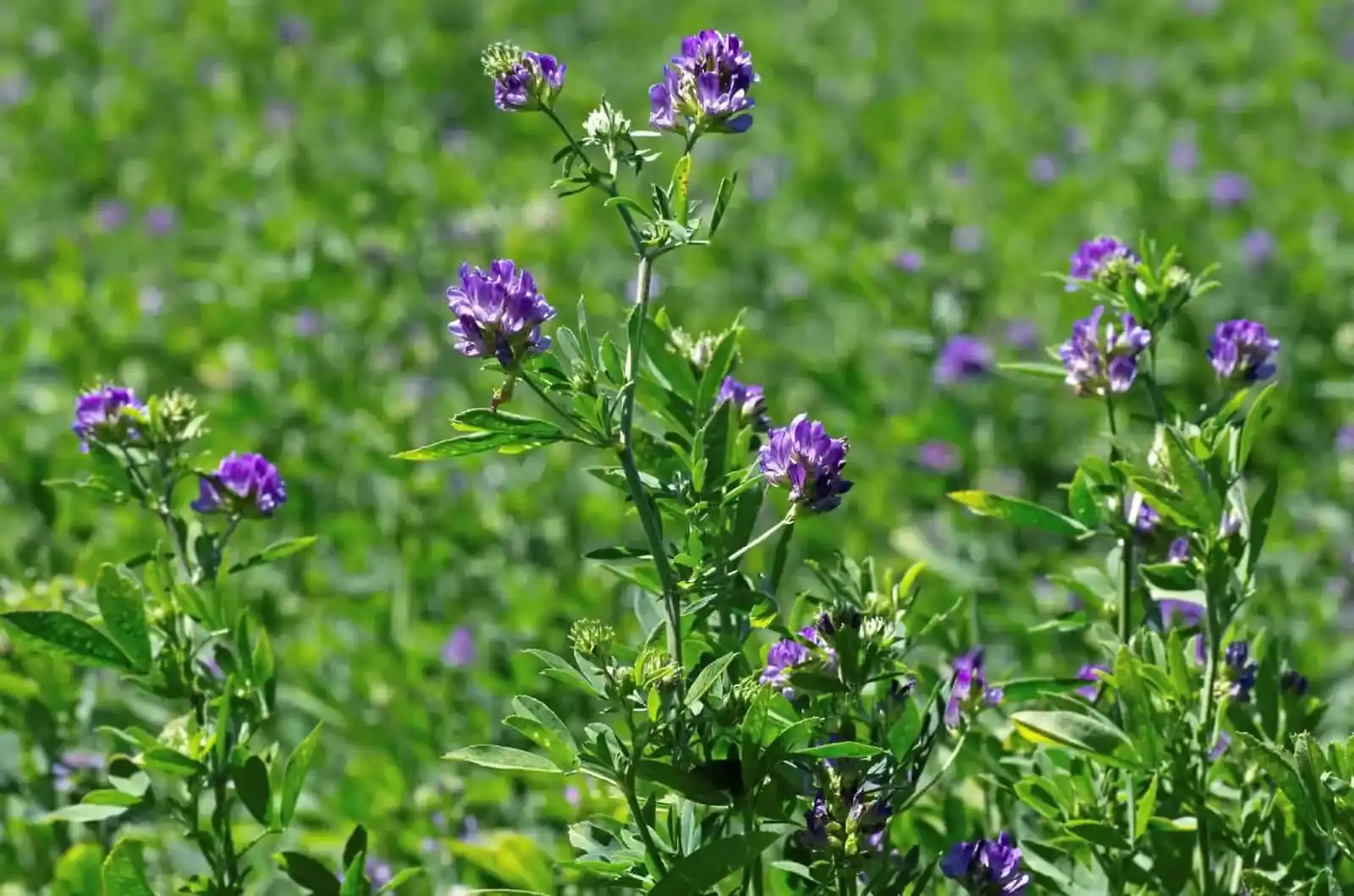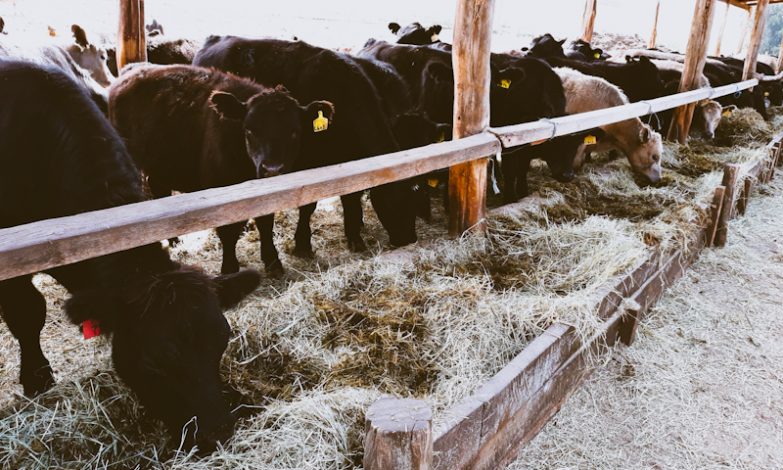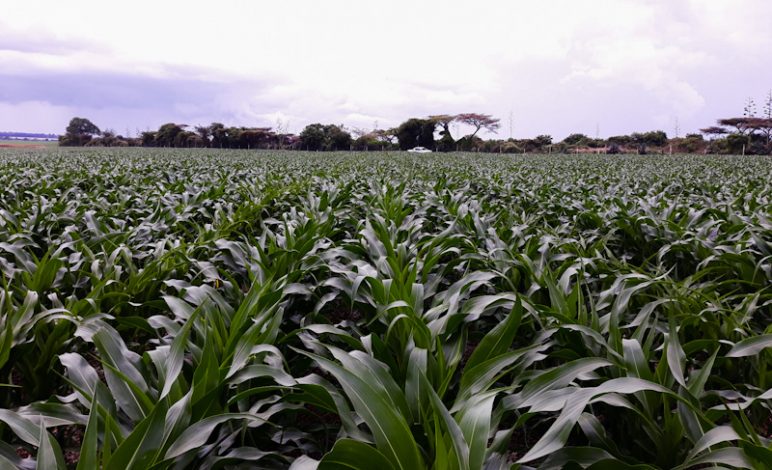To feed the ever-growing world population, some farmers have to feed the livestock first. This important task falls on nutritious forage crops, also referred to as fodder.
They are the ones that stand as nature’s provision for the farm’s four-legged residents. Such types of crops are grown for their leaves and stems, which the animals eat either through grazing or by consuming harvested hay or silage.
In both cases, timing is of great importance to ensure optimal quality and quantity of conserved fodder, primarily their protein content, digestibility, and appealing taste, which are crucial for ensuring the well-being and productivity of animals.
Depending on their purpose, some types of forage crops can be cultivated as a single crop, combined with wheat or legumes, or as a cover crop. Either way, they are undeniably a fundamental element in farming.
Apart from being food for animals, they play a significant role in sustainable agriculture development by contributing to soil enhancement and erosion prevention.
More so, many forage crops possess diverse applications, including their use in biofuels, food production, or fibre manufacturing.
Importance of Forage Crops In Agriculture
There are different types of crops for agriculture, each having its value in terms of enhancing soil health, covering people’s nutrition needs, or being perfect animal feed.
However, zooming in on the latter, it’s important to understand that the benefits of forage crops for agriculture stretch far beyond their primary purpose—being a nutritional powerhouse and bestowing livestock with essential sustenance, thereby bolstering their vigour and output.
Outside the barnyard, these crops are fostering soil fertility and structure while mitigating erosion and amplifying soil water retention capacities. Resistant to drought, many forage crops thrive even in arid landscapes, making them a salvation for regions facing water scarcity.
In the agricultural ballet, forage crops pirouette through crop rotation, disrupting disease cycles and curtailing soil-borne pests. Not merely a crop but a source of revenue, these plants are sold as hay or silage, offering a year-long commodity for farmers to market.
Their underground prowess in carbon sequestration is another of their hidden superpowers. With sprawling root systems delving deep into the ground, forage crops act as carbon storage, enriching soil organic matter and alleviating reliance on synthetic fertilizers.
We can’t forget that forage crops also foster biodiversity by welcoming beneficial insects and providing perfect conditions for necessary soil microorganisms, thereby fostering a rich ecosystem.
Crops Types Used For Animal Feed
Now that we’ve covered the benefits forage crops possess, let’s go through the exact ones that are responsible for such advantages.
Famous for their richness in protein and essential amino acids, soybeans stand out as a key source of digestible fibre, seamlessly integrated into the diets of diverse livestock.
Corn, a stalwart in processed animal feeds, is not only a source of energy but also boasts a treasure trove of nutrients such as vitamin A and fibre, nurturing the digestive well-being of the animals it feeds.
Oats, with their notable high-fat content and an arsenal of essential amino acids, prove to be a reliable energy source while also significantly enhancing milk production in various livestock species.
Barley emerges as a sturdy contender in the realm of livestock nutrition, offering a robust blend of energy and protein, while its high potassium content makes it a sought-after choice for beef and dairy cattle diets.
Sorghum, versatile in its utilization of grain, stalks, and leaves, serves as a necessary source of energy across a spectrum of livestock, from beef to swine and from poultry to dairy.
Alfalfa, valued for its digestibility and protein richness, comes in an assortment of forms—whether as hay, silage, pellets, or left for grazing—that cater to the varied tastes and needs of different animals.
Leguminous crops like groundnut and trefoil, celebrated for their low-fat, high-protein constitution, play a pivotal role in elevating the yield and quality of grazing pastures, enriching the foraging experience for livestock.
Clover, despite being a valuable asset in enhancing milk and meat production, requires careful administration to prevent potential disorders in livestock, despite its benefits.
All of those form a diverse mosaic of healthy animal diets. This, of course, extends further to encompass nutrient-dense sources like bran, straw, and husks hailing from various grains, along with invaluable by-products like coconut and linseed meal, forming a banquet of nutritional abundance that satisfy the intricate dietary needs of varied animal classes, sustaining their health and productivity.
The significance of forage crops in agriculture is impossible to overestimate. They not only nourish livestock but also fortify agricultural landscapes, nurturing soil health, mitigating erosion, and fostering biodiversity, thus embodying sustainability, ensuring animal well-being, and safeguarding the earth beneath our feet.
Forage crops become a tool of great power in farmers’ hands when the right plant is chosen and managed carefully to ensure the best result.





